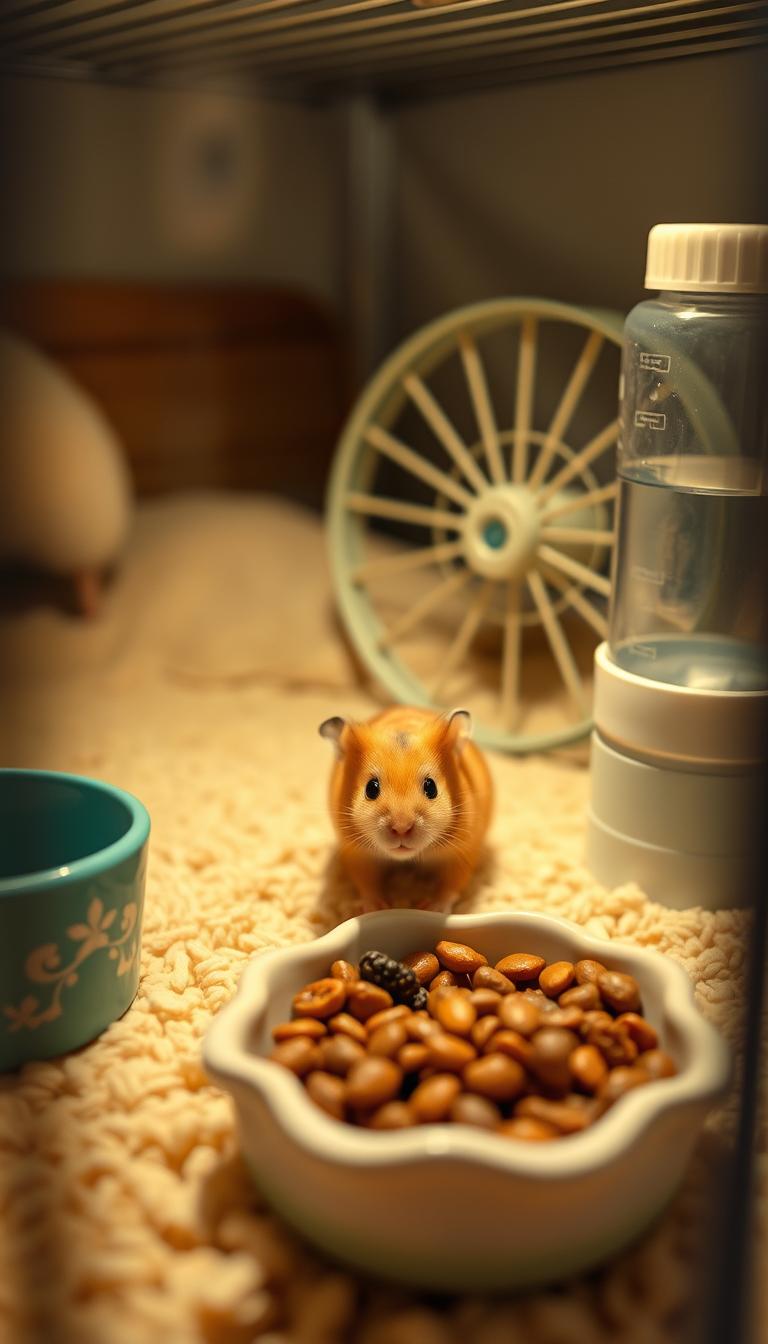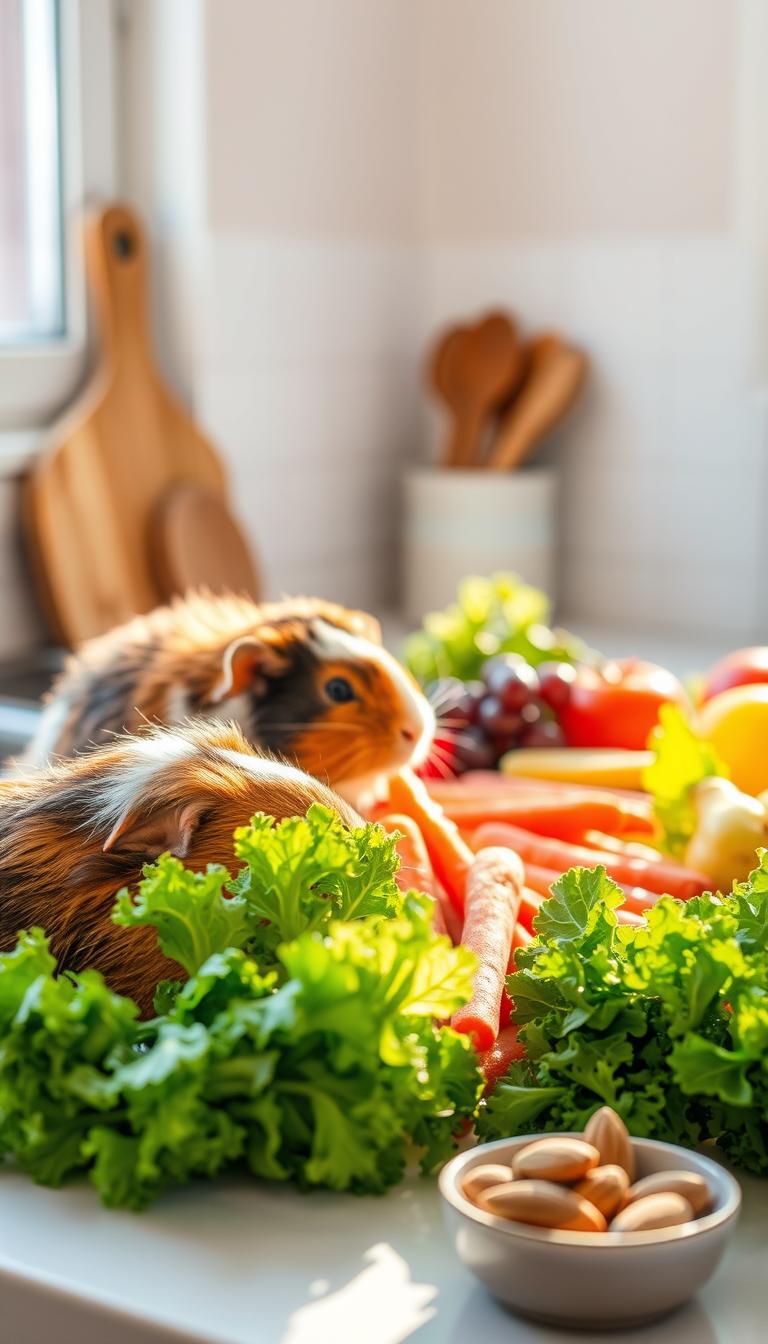Many small pet owners worry when their furry companions show unusual actions. Stories about self-destructive tendencies often spread quickly, but science tells a different story. Research reveals these behaviors usually stem from treatable causes rather than intentional harm.
Health challenges and environmental stress are common triggers for concerning actions. Aging pets or those in poorly designed habitats might accidentally put themselves at risk. A study from the Journal of Small Animal Practice shows proper care significantly reduces such incidents.
You play the most important role in your pet’s wellbeing. Recognizing early signs of discomfort prevents most issues. Simple changes to diet, cage setup, or enrichment activities often make dramatic improvements.
This guide helps you spot red flags and create a safe space. You’ll learn how to distinguish myths from facts and respond to your companion’s needs effectively. With the right approach, every owner can foster a thriving environment for their tiny friend.
Table of Contents
Challenging the Myth: Are Hamsters Suicidal?
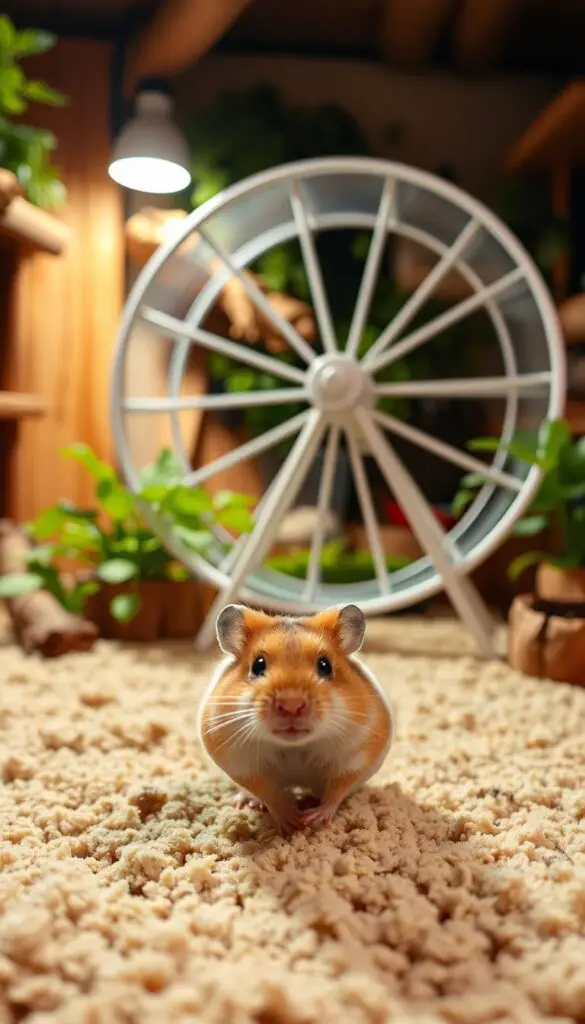
Pet lovers often misinterpret their tiny companion’s strange actions as intentional self-harm. The truth? These small animals operate on instinct, not complex emotions. As prey creatures, their entire biology prioritizes survival above all else.
“What people see as risky behavior usually stems from natural responses,” explains a veterinary behavior study. Repetitive cage-chewing or frantic climbing often signals unmet needs rather than self-destructive tendencies. Older pets might accidentally stumble due to fading eyesight, while bored juveniles seek stimulation through excessive digging.
Your hamster’s actions always have logical roots. A pet racing nonstop on its wheel could be coping with stress or pent-up energy. Those attempting “escape routes” might dislike their bedding texture or cage layout. Recognizing these clues helps you address core issues instead of fearing imaginary ones.
Watch for patterns: Does your furry friend calm down after cage upgrades? Do new chew toys reduce bar-gnawing? Simple adjustments often solve what looks like concerning behavior. By understanding their instinct-driven world, you become better equipped to create a safe, enriching home.
Understanding Natural Hamster Behavior
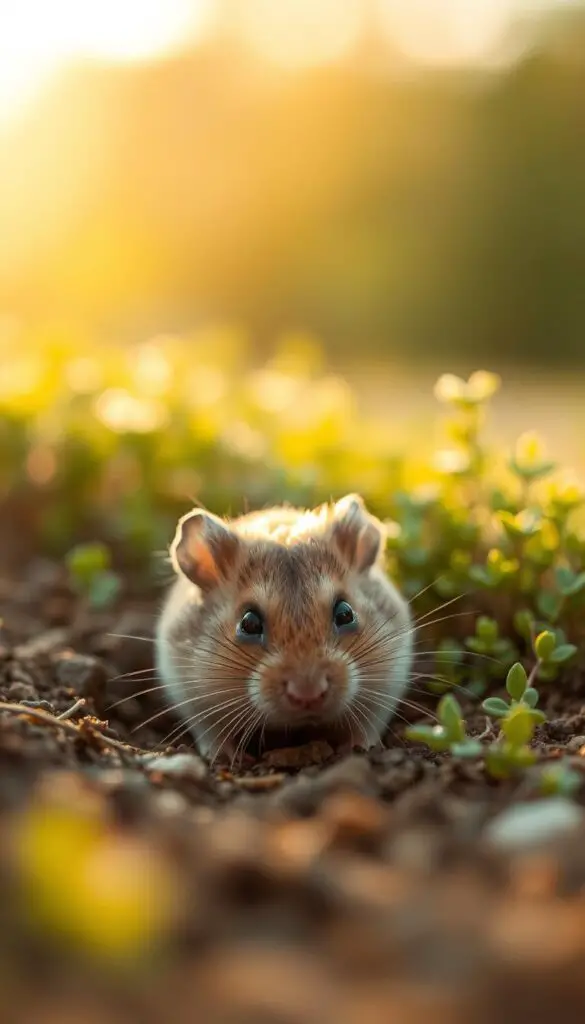
Observing your tiny companion’s quirks might leave you puzzled at first. These small animals follow biological rhythms shaped by thousands of years of evolution. Knowing what’s typical helps you create a habitat that feels like home.
Nighttime Energy Surges
Your pet’s 3-4 hour nightly workouts aren’t random – they’re survival instincts. Wild ancestors foraged under moonlight to avoid predators. Today’s domesticated versions keep this schedule, racing wheels when lights dim. This explains why you’ll hear rustling while preparing for bed!
Essential Survival Actions
Chewing isn’t mischief – it’s dental care. Teeth grow continuously, requiring wooden blocks or mineral chews to stay trimmed. Those adorable stuffed cheeks? They can hold half your pet’s weight in supplies for later snacking. Stock up on safe chew toys and nesting materials to support these needs.
Burrowing mimics wild habitats where tunnels provide safety. If your friend vanishes under bedding for hours, they’re simply practicing instinctual hideouts. These behaviors peak during active daylight hours but reverse for nocturnal species like Syrian hamsters.
Recognizing Common Health Mistakes in Hamster Care
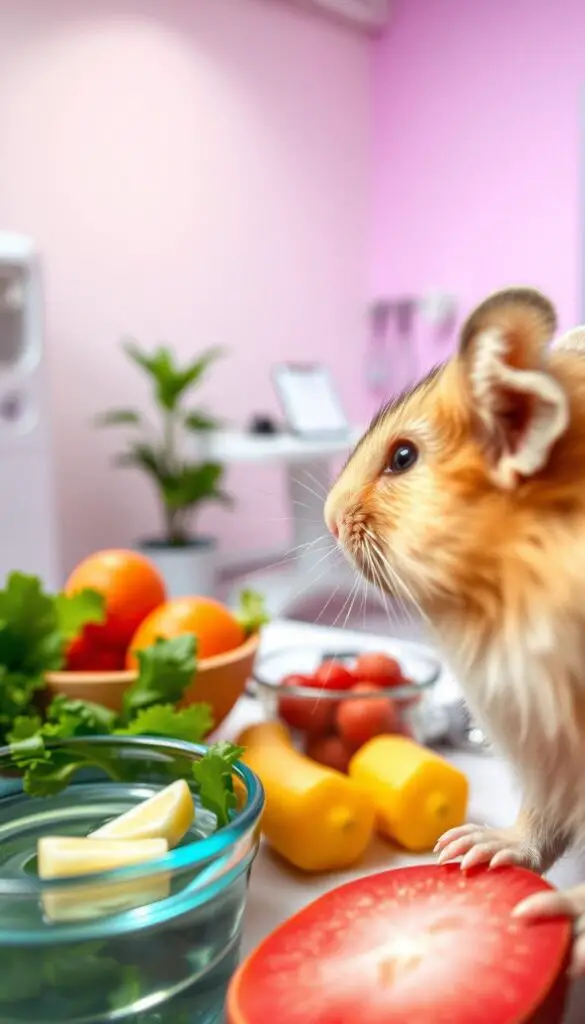
What’s really hiding in your hamster’s food bowl? Many owners unknowingly create health risks through simple oversights. Two critical areas often overlooked involve nutrition and professional care – both vital for your tiny friend’s longevity.
Improper Diet and Overfeeding
Your furry companion needs specific food combinations to thrive. While fresh veggies and fruits make great supplements, they shouldn’t replace high-quality pellets. Dangerous choices like citrus fruits or raw beans often surprise new owners – these can cause digestive disasters.
Portion control matters more than you think. A teaspoon of daily pellets prevents obesity, paired with measured treats like broccoli florets. Research from veterinary nutrition guidelines shows hoarding instincts distort how much your pet actually consumes.
Neglecting Regular Vet Checkups
Don’t wait for visible symptoms – hamsters mask illness like furry ninjas. Annual exams catch hidden issues from dental problems to tumors. Exotic animal specialists use specialized techniques even basic weight checks reveal early diabetes signs.
Your vet becomes your secret weapon. They’ll help decode subtle changes in eating patterns or activity levels. Proactive care often means simpler treatments and happier outcomes for your pocket-sized pal.
Age-Related Changes That Affect Hamster Well-Being
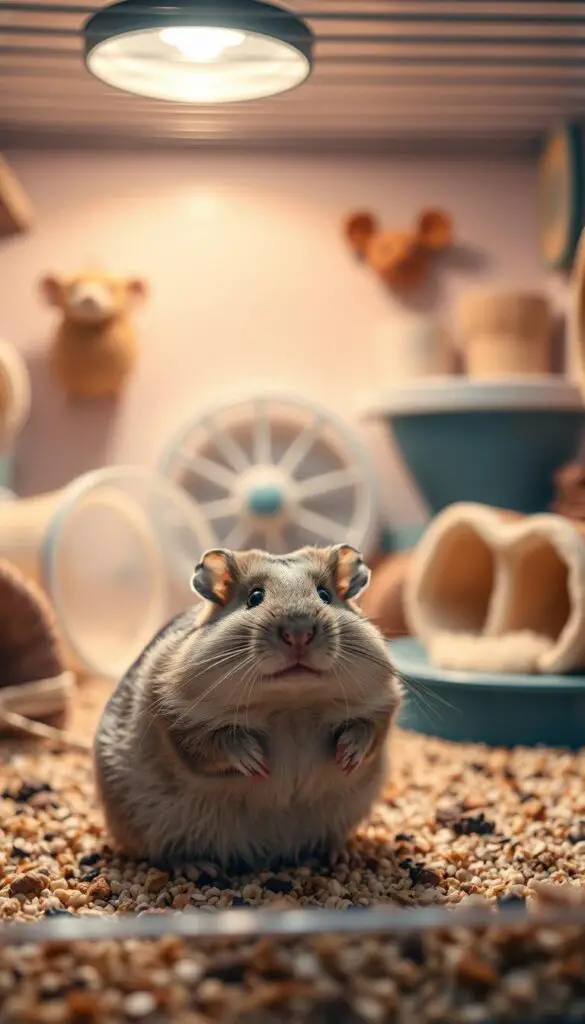
Your tiny companion’s golden years bring unique joys and challenges. Like humans, older pets experience physical shifts requiring thoughtful adjustments. Recognizing these changes early helps maintain their comfort and vitality.
Signs of Aging in Your Hamster
Watch for slower movements and longer naps during playtime. A once-energetic friend might skip wheel runs or ignore favorite tunnels. Changes in appetite often appear – some nibble less, while others eat irregularly.
Weight fluctuations signal health shifts. Use a kitchen scale weekly to track ounces. Matted fur or missed grooming sessions may indicate arthritis or dental trouble. Cloudy eyes or hesitant movements often point to fading senses.
Managing Age-Related Health Issues
Simplify their space: swap multi-level cages for single-floor setups with ramps. Place food bowls and water bottles within easy reach. Veterinary studies show soft paper bedding reduces joint strain better than wood shavings.
Heart issues often surface as labored breathing or lethargy. “Senior pets need calorie-controlled diets to prevent obesity-related strain,” advises Dr. Emily Carter, rodent health specialist. Schedule bi-monthly checkups to catch problems before they escalate.
Celebrate their twilight phase with gentle interactions and cozy hideouts. While their time with you grows shorter, your care ensures every moment remains rich and comfortable.
Impact of Deteriorating Senses and Stress
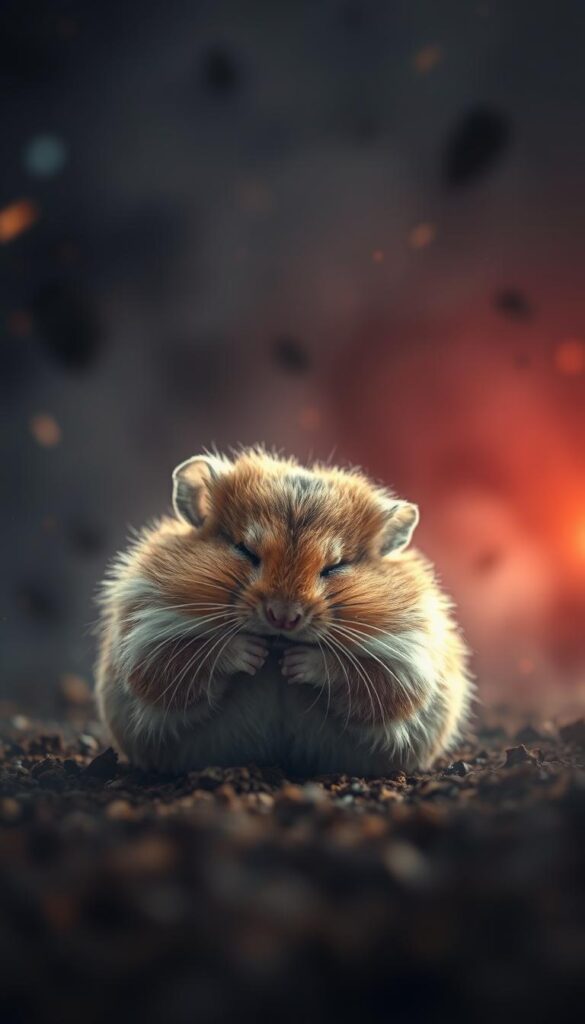
Your furry friend’s world changes dramatically as their senses fade. Unlike many animals, hamsters experience rapid vision loss that reshapes their confidence. This natural decline leaves them vulnerable – prey instincts kick into overdrive when familiar surroundings become blurry.
Watch for subtle shifts in daily routines. A once-curious pet might avoid exploring new toys or hesitate during daytime interactions. You’ll notice increased reliance on whisker touches and sniffing motions to navigate. Sudden noises may trigger exaggerated jumps as hearing compensates for poor eyesight.
Stress amplifies these challenges. Repetitive cage bar biting or frantic sand kicking often signals overwhelm. These behaviors sometimes stem from hamster cage rage triggered by environmental factors. Loud TVs, strong perfumes, or irregular feeding times can push your companion into survival mode.
Create stability through simple adjustments:
- Keep furniture in fixed positions
- Use textured pathways for orientation
- Introduce changes during active hours
Soft vocal cues help build trust as vision fades. Talk gently before handling so your pet recognizes your presence. Consistent routines reduce anxiety, letting hamsters focus their energy on adapting rather than fearing the unknown.
Identifying and Preventing Diabetes and Other Diseases
Spotting health changes quickly gives your pocket-sized pal the best fighting chance. Two conditions demand extra attention: diabetes and cancer. Both diseases progress rapidly but can be managed with early action.
Spotting Early Warning Signs
Watch for unusual water consumption. A hamster draining its bottle daily or leaving wet bedding needs evaluation. Unexplained weight loss often accompanies excessive thirst – track ounces weekly using a kitchen scale.
Cancer symptoms vary but often include visible changes. Check for lumps during gentle belly rubs or while they snack. Sudden fur loss or crusty skin patches may also indicate trouble beneath the surface.
| Condition | Key Signs | Action Steps |
|---|---|---|
| Diabetes | Sweet-smelling urine, lethargy | Reduce sugary treats, vet visit |
| Cancer | Visible masses, appetite shifts | Immediate exotic vet consultation |
Creating a Preventative Health Plan
Establish a weekly checkup routine:
- Weigh every Sunday morning
- Inspect teeth and fur texture
- Note food/water intake changes
Partner with an exotic animal vet for bi-annual exams. These specialists detect subtle disease markers owners might miss. Keep a health journal – recorded patterns help identify issues before they escalate.
Prevention starts at home. Offer balanced meals with controlled portions and rotate enrichment activities. Your vigilance creates a safety net against silent threats.
Avoiding Risks Associated with Overexertion
That spinning wheel in your pet’s cage holds hidden risks when used excessively. While exercise fuels natural instincts, marathon sessions can strain small bodies. Dehydration amplifies dangers – always keep water sources clean and accessible.
Watch for labored breathing lasting several minutes post-run. Stumbling motions or refusal to eat signal urgent needs. These tiny athletes might ignore their limits during nighttime activity bursts.
Create cooling zones during warm months using ceramic tiles. Rotate toys weekly to prevent obsessive wheel fixation. Limit continuous running to 2-3 hours by temporarily removing the wheel if needed.
Balance is key: provide tunnels, chew sticks, and foraging puzzles. Your vigilance transforms risky habits into healthy routines. With smart adjustments, you’ll protect your energetic companion while honoring their active nature.

